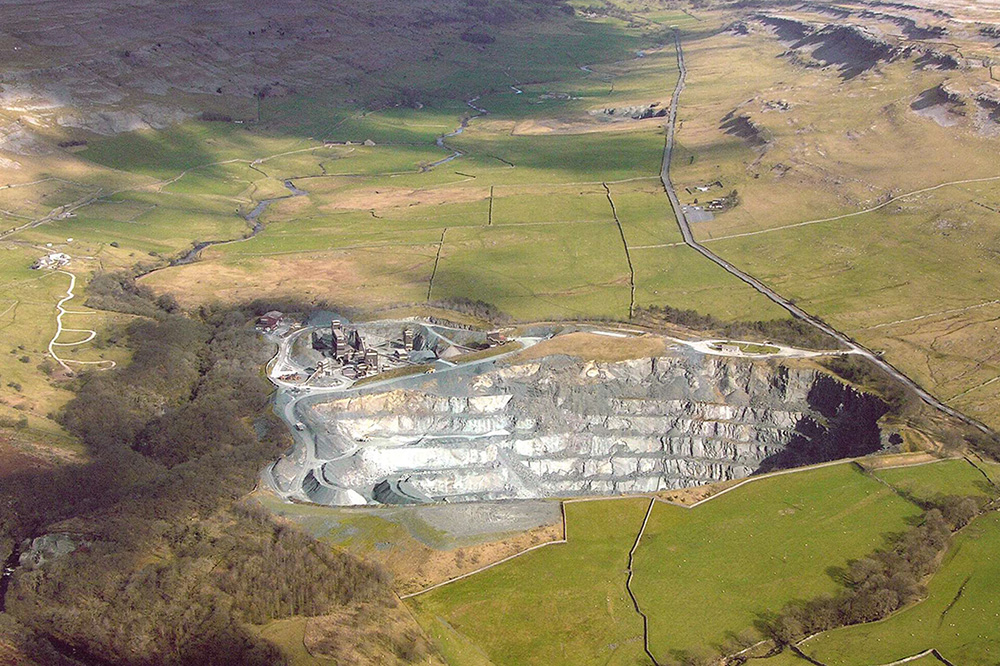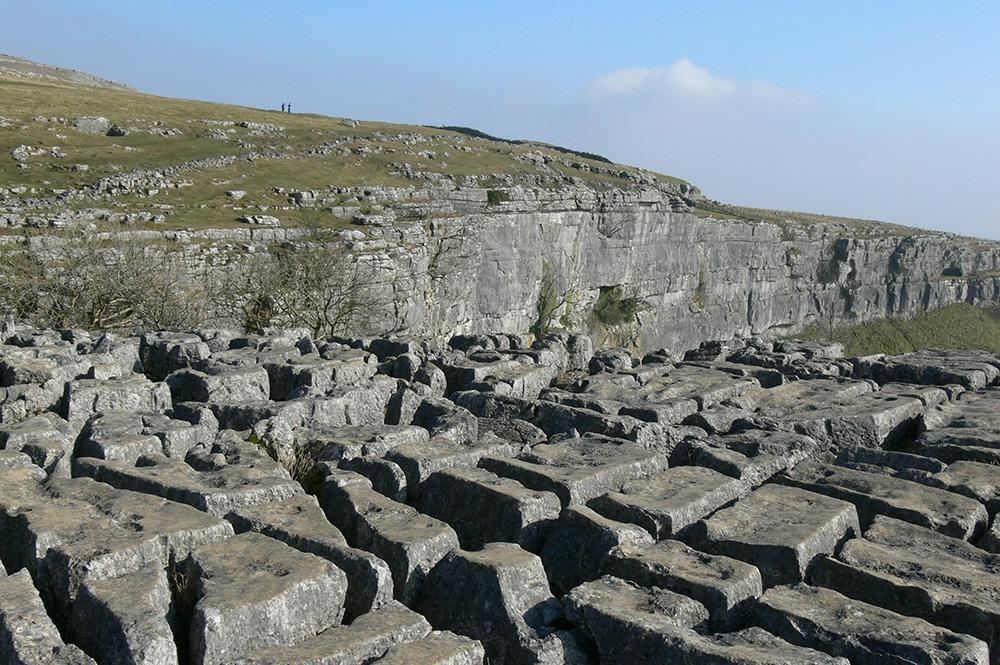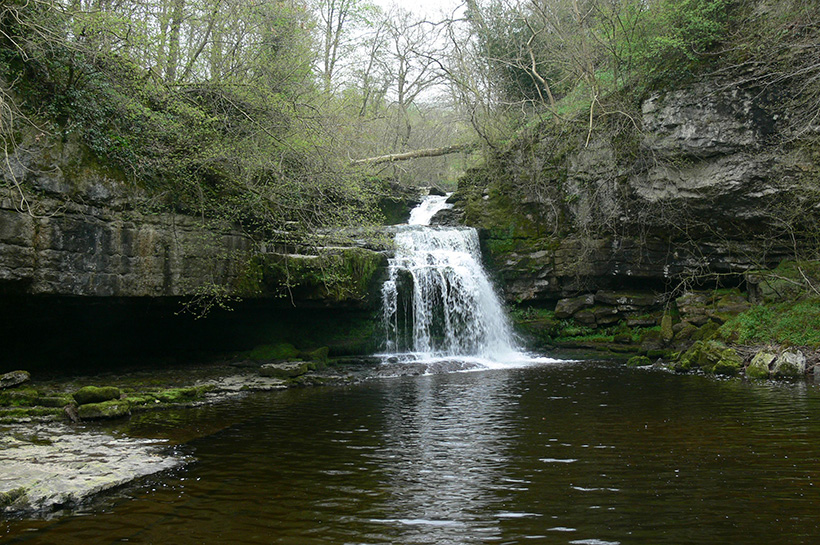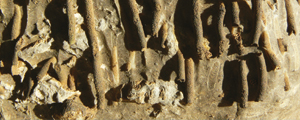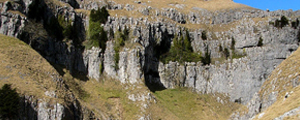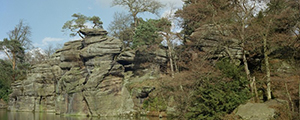Rocks of Jurassic age outcrop over the eastern section of the Vale of York and include the Howardian Hills and North Yorkshire Moors. The end of the Triassic and beginning of the Jurassic is marked by the establishment of a shallow sea. In this sea, the shales, clays, thin limestones and sandstones of the Lias Group were deposited. Following a period of gradual uplift of the land, the succeeding, Middle Jurassic sandstones and mudstones of the Ravenscar Group were deposited on a low-lying coastal plain crossed by large rivers. Within this part of the Jurassic succession a number of fossil plant horizons occur in the sandstones and shales and include fossils of types of cycads, ferns and conifers. Periods of marine inundation over the coastal plain are marked by beds of more calcareous-rich rock that contain the fossils of marine creatures such as bivalves and bryozoans.
Photo: Cleave Dyke Quarry, Hambleton Hills – Corallian Group calcareous sandstones and limestones.
The Upper Jurassic is represented in the Vale of York by sediments deposited under marine conditions. The lower part of the sequence comprises the shallow-water calcareous sandstones and limestones of the Corallian Group, which contains many types of fossils including bivalves, sea-urchins, brachiopods and corals. This sequence of rocks forms the west facing scarp of the Hambleton Hills rising to about 400m above the Vale of York.
Erosion has worn away the younger rocks taking with them clues to the events that formed them – most of 140 million years of rock history is now missing. The main exception is the quartz dolerite Cleveland Dyke, which was intruded, about 58 million years ago, into the Jurassic rocks of the North York Moors, and is believed to form part of the dyke ‘swarm’ radiating out from the Isle of Mull.
